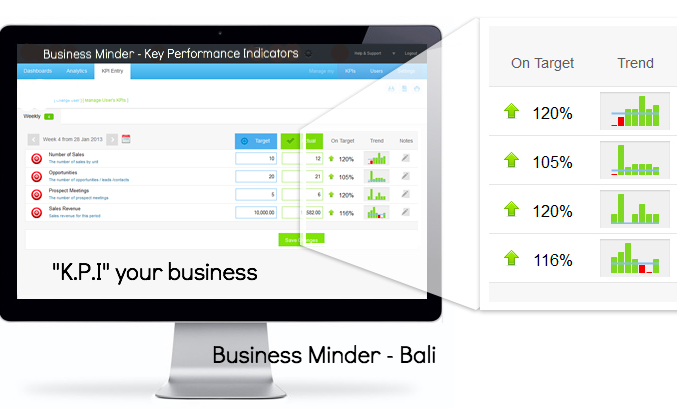K.P.I.'s for your business - Snapshots and Dashboards using Key Performance Indicators
- Gary Chamberlain

- Sep 21, 2022
- 3 min read

K.P.I.'s are the most important guide for any business. Every business should have them. KPI's are an actionable scorecard that keeps your strategy on track. They enable you to manage, control and achieve desired business results. You don’t need a lot of metrics, but you do need to carefully select, report, and take action from the handful you choose. Most businesses rely on financial statements and sales results as their primary indicators of performance, but you can develop many other “KPIs” that fit your business.
Where are your company’s strengths and weaknesses? By focusing on specific indicators in a one page 'snapshot' or 'dashboard' you can measure performance against the goals you’ve identified. KPI's help to get insight in your business performance - "What gets measured, gets managed". KPI's are also known as performance metrics, business indicators, and performance ratios.
KPI's help you to lead the way towards improving your business performance where it’s needed most. You create a history of how well your business performs over weeks, months, and years. From this history, you’ll be able to quantify success and make note of warning signs where changes are necessary.
Businesses that struggle working through their KPI’s need to ensure they are reviewing on a monthly basis and that senior staff understand the indicators. You should be getting a monthly management report reviewing how you are doing financially and analysing your results. At this time you should be also reviewing your strategies and KPI's and any decision-making is transparent.
Determine appropriate metrics. Examples of relevant indicators may include:
Marketing
Sales growth
Market share
Customer retention rate
Production
Age of equipment
Workforce turnover
Readiness to expand capacity
Levels of quality control
Distribution processes
Sales-force training and effectiveness
Product quality
Retention of supplier
Competitors
Measure what’s most important. It may take a little time and effort, but after getting a sense of what information is crucial to track, you want to actually narrow your ongoing performance measurement. (This isn’t feasible until you truly grasp the parameters of your company’s strengths and weaknesses.) Choose one or two major objectives, refine your KPIs around them, and focus on collecting the relevant data.
This approach separates successful business owners from those who measure their success or failure to poorly defined “market conditions” or “adverse sales environments.” With some focused monitoring and analysis, you’ll have a much better understanding of where your efforts are most effective and where you need to adjust your processes to avoid a major setback.
What makes a good KPI?
KPI's should be clear so the team or individual knows exactly what they need to achieve and when. ‘Increasing sales’ for example can be ambiguous. Is it sales units or sales dollars and when must the target be achieved?
It is important that KPI's can be measured. KPI's such as ‘Customer satisfaction’ can be difficult to measure whereas ‘customer complaints per month’ can be captured readily. KPI's should be achievable and actionable so that the individual or team should have a degree of control or influence over the achievement of the KPI. Giving someone a KPI they cannot influence will not empower them and will not be reflective of their performance. The time period that you will measure performance is important and must also be specified.
It must allow a suitable period of time for the performance to occur, eg. if you average one customer complaint per week, don’t set a KPI based on number of complaints received per day as that number would be meaningless (0.2 complaints per day).
Your systems must also be capable of reporting on the KPI in the required timeframe, that is, don’t set a daily sales target if your system only allows you to see sales on a weekly basis.
The KPI reporting must give people time to assess how well they are performing, and change activities if required. For example, a KPI of annual sales is unhelpful if you only look at results once a year. You must break the KPI into smaller increments, eg. weekly sales, so corrective action can be taken if needed to meet the annual target.
Another key metric is comparing your company’s performance against that of the competition. Fortunately, plenty of information on your competitors is available, including what you can find by conducting a simple web search, browsing their annual reports, and monitoring their press releases and any coverage by news media or trade publications. Gathering this information is part of the data collection process. Each business has to find its own best way to track, compile, and record the most relevant data, based on what emerges from the KPIs.
The Business Minder can help. Contact me today on +62 81 999 121 181.












































Comments